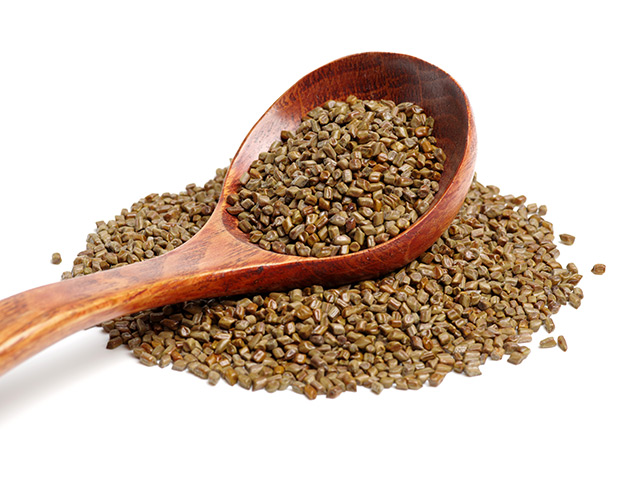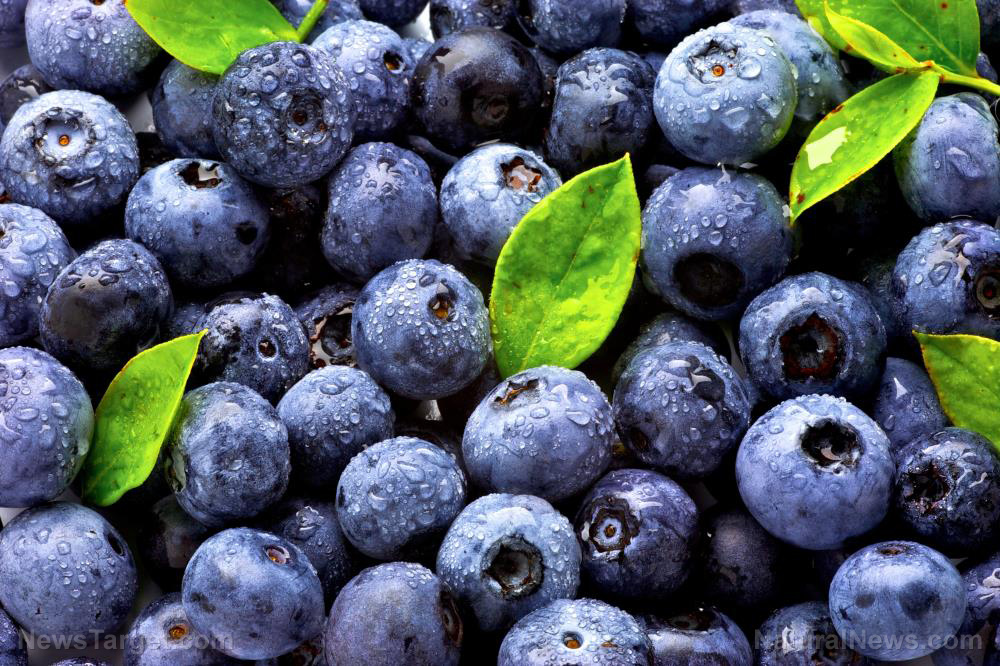The GMO agenda takes a menacing leap forward with EPA’s silent approval of Monsanto/Dow’s RNAi corn
01/03/2018 / By News Editors

Without much more than a whisper from the mainstream media, Monsanto’s newest Frankenfood has received full EPA approval and will be arriving on dinner plates by the end of the decade. The implications of this are harrowing, to say the least.
Article by Sayer Ji republished from GreenMedInfo.com
While you may not have made up your mind on the dangers of GMOs, you likely feel entitled to know when you’re consuming a food that is the product of laboratory research. For this reason, I am reporting on Monsanto’s latest food technology, unfortunately, already in the pipeline. And quite silently so. I write this with a certain degree of solemnity, if not also a tinge of regret, because, for three years, I have heard rumblings of Monsanto’s next project – RNA interference technology. It was actually the late Heidi Stevenson, my friend, colleague, and founder of the platform Gaia Health, who first alerted me to the dangers of RNA interference-based tinkering with our food supply when she reported on the near disastrous approval of GMO wheat using RNA interference technology in Australia. Thankfully a few brave scientists and informed public stood up and, together, averted the disaster. But since then, both the dangers and the breakneck speed of development of this technology have gone largely ignored, even among activists deep in the non-GMO movement. In order to truly appreciate the gravity of the situation, and why the EPA’s approval of RNAi corn intended for human consumption, is so concerning, it will first require a little background information on the fascinating topic of non-coding small RNAs, and their formidable relevance to our health.
How Non-Coding, Small RNAs Link Together The Entire Biosphere
One of the most important discoveries of our time is that all plants, including those we use for food and animal feed, contain a wide range of RNA molecules capable of inhibiting gene expression or translation. These non-coding RNA molecules neutralize targeted messenger RNA molecules (mRNAs), which prevents their translation into a protein, i.e. they “silence genes.”
Compelling research has surfaced suggesting that not only do these genome-regulating small RNA molecules exist in our foods, but that they are capable of surviving digestion, and being absorbed into our bodies fully intact where they alter, suppress or silence genes, post-transcriptionally. Moreover, some of these small RNAs — primarily microRNAs (miRNAs) and small interfering RNAs (siRNAs) — are believed to be cross-kingdom mediators of genetic information, making it possible for RNAs in one species impacting many others through both their active and passive exposure to them.
Food therefore is essentially an epigenetic modifier of gene expression, making it a form of information, and not only a source of bodily building blocks and caloric energy, as conventionally understood. As such, any significant changes to food or feed staples within our food chain could have powerful impacts on the physiological fate of those consuming them, essentially rewriting the functionality of our genomic hardware via software like changes in RNA profiles. The entire biosphere, therefore, is held together in a web-like fashion through these molecular RNA messengers, lending a plausible mechanism to the biotic aspect of Lovelock and Margulis’ Gaia theory of Earth as a self-regulating, meta-organism. You can learn more by reading my article Genetic Dark Matter, Return of the Goddess, and the Post-Science Era.
Monsanto and Co Capitalizing on RNA interference Technology
While this discovery will have profound implications for the field of nutrition and medicine, it has also created enormous interest among biotech and agricultural firms, namely, Monsanto and Dow, looking to capitalize on the design of proprietary products using interference (RNAi) technology. In mid June, last month Monsanto received EPA approval for a type of corn genetically altered to produce an RNA-based pesticidal agent (aka, a plant-incorporated protectant (PIP)) which lethally targets a metabolic pathway within the corn rootworm, known within the industry as the “billion dollar bug.” Branded as Smartstax PRO, the newly minted GMO plant produces a small, double-stranded RNA known as DvSnf7 dsRNA which disrupts a critical gene within the rootworm, causing its death. This was added on top of four other “stacked” GMO traits, such as the ability to produce two other pesticidal proteins (Cry1A.105 and Cry2Ab2), as well as survive exposure to both glyphosate (aka Monsanto’s Roundup 2) and Glufosinate (aka Dow’s Libertylink), highly toxic herbicides. Roundup, for instance, has demonstrated carcinogenicity in the parts per trillion range. Yet, the EPA considers it perfectly safe for consumers to ingest many orders of magnitude higher concentrations than that, proving its function as a cheerleader and not a regulator of the industry that controls our food supply.
The Atlantic, one of the only mainstream news outlets to report on the topic, pointed out how surprisingly low key the approval process was:
“The EPA’s decision attracted little attention from the press or even from environmental groups that reliably come out against new genetically modified crops.”
Bill Freese, The Center for Food Safety’s science policy analyst, told the Atlantic he was caught off guard by EPA’s decision to only allow 15 days of public comment, and the fact that it did not post its decision to the Federal Register, as it customary, especially considering how unprecedented the use of a RNAi insecticide in a plant intended for human consumption is. Monsanto anticipates the new corn will be on the market by the end of the decade.

One would imagine that such revolutionary technology would require short and long-term (decades) of safety testing before licensure. Instead, as is often the case with big-ticket market agendas, the product is being rushed to market. There are already significant biases in place within the EPA and USDA in regard to nucleic acids – assumptions that exempt them from cautionary considerations. RNA is considered Generally Accepted As Safe (GRAS), but this is because it is defined and perceived only as a physical substance rather than as the powerful signaling/informational molecule it is. The EPA’s approval of RNAi food crops ignores the fact that it takes a multi-generational timescale to understand the influence of epigenetic modifiers on the genome of a species, much less the human species, whose timescale is orders of magnitude beyond animal models used to establish much of the risk/benefit data used in pre-approval evaluations. RNAi interference technology promises specificity — one RNAi molecule change equals one gene suppressed — but ignores the virtually infinite possibility of unintended, adverse effects in what are incomprehensibly complex biological systems. Indeed, researchers have warned that RNAi can not only profoundly affect gene expression, but that the changes it induces can permanently alter a species through inherited traits 1:
“Once a silencing effect is initiated, the effect may be inherited. The biochemistry of this process varies depending on the organism and remains an area of active research with many unknown aspects. Nevertheless, it is known for example that human cells can maintain the modifications necessary for TGS, creating actual or potential epigenetic inheritance within tissues and organisms (Hawkins et al., 2009). In some cases the dsRNA pathways induce RNA-dependent DNA methylation and chromatin changes (TGS) that persist through reproduction or cell division, and in other cases the cytoplasmic pathways remain active in descendents (Cogoni and Macino, 2000).”
GM Technology and Unintended Consequences
Indeed, critics of RNA interference technology make the point that RNAi technology aims to target the production of a specific protein by identifying the sequence in question. But two or more genes can have sequence homologies. This means, as applies to the use of RNA interference in medicine, a gene that is targeted to turn off a “disease-causing gene” could have a number of off-target effects, one of which would be turning off a gene that is essential to health and vitality.
This is, in fact, what happened October of last year, when Alnylam Pharmaceuticals, a leading developer of RNAi drugs, announced it had decided to discontinue revusiran, its lead drug candidate, after an excess of deaths occurred in the experimental drug group versus placebo. This sent shockwaves throughout the overly exuberant RNAi drug industry, reducing their stock 6% on average.

Criticisms of RNAi in the agricultural sector are long-standing among the highly informed. For instance, Jonathan Latham, Ph.D. and Allison Wilson, Ph.D., wrote a seminal paper on the topic over a decade ago titled “Off-target effects of plant transgenic RNAi: three mechanisms lead to distinct toxicological and environmental hazards,” wherein 3 of the primary safety concerns are addressed: 1) Off target effects leading to non-specific down-regulation of plant RNAs 2) Off target effects affecting non-target invertebrates feeding on plant material 3) potential effects on mammals. In mammals, long (>30 bp) perfectly duplexed RNAs (such as are typically produced by plant RNAi transgenes) are Pathogen Associated Molecular Patterns (PAMPS) and are consequently highly potent triggers of innate anti-viral defences. The effects of long dsRNAs on mammalian cellular functions are typically profound and extend to complete inhibition of protein translation and cell death. Nevertheless, the implications of such molecules in the mammalian diet have hardly been tested.
That’s quite a serious list of concerns. As you can see, concern #3 includes the possibility that these dsRNAs may lead to protein translation and cell death. Clearly if the EPA has declared Monsanto and Dow’s new RNAi corn safe for human consumption, they would need to prove this a non-issue.
Monsanto Falling On Their Own ‘Peer-Reviewed’ Sword
Surprisingly, Monsanto itself has produced one of the most damning papers on the topic yet. Several years ago I stumbled upon a study funded by Monsanto that raised a number of red flags for me. Titled, “Endogenous small RNAs in grain: Semi-quantification and sequence homology to human and animal genes,” researchers employed by Monsanto in their St. Louis, MO, laboratory analyzed the presence of endogenous small RNAs in common food and feed staples — soybeans, corn, rice — discovering that hundreds of these plant RNAs had a perfect 100% complementary match to human genes as well as other mammals.

Why is this significant? Endogenous small RNAs, such as small interfering RNAs (siRNAs) and microRNAs (miRNAs), are effector molecules of RNA interference (RNAi), which is a gene suppression mechanism found in plants, mammals, and other eukaryotes. The implication, therefore, of Monsanto’s finding is that plant RNAs — were they capable of surviving digestion and accumulating in target tissues to physiologically relevant concentrations — are capable of epigenetically silencing hundreds of genes within the human body. Below you will find a list of the RNA/gene matches between rice and the human genome:


Despite the abundance of perfect 100% complementarity matches listed above, Monsanto’s conclusion was a conveniently pollyannish dismissal of the safety implications of these findings, stating that:
“The abundance of endogenous small RNA molecules in grain from safely consumed food and feed crops such as soybean, corn, and rice and the homology of a number of these dietary small RNAs to human and animal genomes and transcriptomes establishes a history of safe consumption for dietary small RNAs.”
While this may be true for traditionally used plants, it does not follow that genetically modified organisms would necessarily be safe because non-GMO versions are. [The pseudo-scientific conceptual ploy of “substantial equivalency“ behind traditional and GMO cultivars has been the basis for the approval of GMOs since their inception.] Monsanto’s conclusion relates to the fact that it has invested a great amount of resources into developing proprietary RNAi-based organisms which help it to maintain and further expand its monopolizing control on the global food supply.
Additionally, one of their primary justifications for concluding the safety of endogenous plant RNAs on human health was that: “…there does not appear to be any evidence in the scientific literature suggesting that intact RNA is absorbed following ingestion.” This bold claim has been disproven. The Monsanto paper was written in 2008, 3 years before the groundbreaking discovery of Zhang et al published in the Cell Research, entitled,”Exogenous plant MIR168a specifically targets mammalian LDLRAP1: evidence of cross-kingdom regulation by microRNA,” wherein it was demonstrated that human subjects fed rice containing the microRNA MIR168a have measurable amounts of it present in their blood and tissue, and that it binds to the lipoprotein receptor adapter protein in the liver. More succinctly:
“These findings demonstrate that exogenous plant miRNAs in food can regulate the expression of target genes in mammals.”
Since then, a hotly contested debate has ensued, which is understandable, given the increasingly politicized and financially-motivated nature of scientific debate and findings.
Here’s Monsanto’s conclusion about the safety of RNAi-based food technology:
“Based on this evidence it can be concluded that RNAi-mediated regulation of gene expression in biotechnology-derived crops is as safe for food and feed use as conventional crops that harness RNAi-based gene regulation as one of several ways to achieve new plant traits. The safety of future crops generated through applications of RNAi should thus be evaluated for safety using the existing comparative safety assessment paradigm, which has been developed for biotechnology-derived Crops.”
First of all, the “evidence” they are referring to is based on an axiomatic absurdity: equating the absence of evidence with evidence of absence. In other words, you can’t prove this negative: “that a hazard does not exist” because positivistic proof of anything requires that you demonstrating something, not nothing.
Let’s also not overlook the conflict of interest statement at the end of their paper: “All authors are employees of the Monsanto Company. The Monsanto Company is an agricultural company that produces,” which speaks to Monsanto’s long history of funding science that denies safety risks of their products, such as the Roundup-Cancer link, which now even the California EPA accepts as fact.
The Heart of the Problem
In a seminal paper published in 2016 in Trends in Microbiology, entitled, “How Our Other Genome Controls Our Epi-Genome,” it is proposed that the very RNAs biotech/agrochemical companies like Monsanto and Dow are tinkering with in our food should be reconsidered as part of the definition of our species versus the conventional view that it is just something informationally inert that we eat and exists “out there.” Using a revised version of Da Vinci’s Vitruvian man, as pictured below, they propose that there are 4 inseparable parts of our species: 1) human cells 2) human microbiota and other bacteria 3) Fungi and Viruses 4) Food.

As you can see, because of the interconnectivity and “social networking” functionalities of RNAs packaged in microvesicles called exosomes, all four parts of this new definition of man become united in an indivisible whole. Because these RNAs packed in edible exosomesepigenetically active, the food we eat “literally talks to our mRNA and DNA,” as I have explained in greater detail here: “Amazing Food Science Discovery: Edible Plants ‘Talk’ To Animal Cells, Promote Healing.”
As we have seen in Monsanto’s own paper on the topic, foods contain hundreds of small RNAs whose 100% complementarity match with human genes imply they can directly impact, and even silence those genes. This silencing is not necessarily “bad,” but it is clear that we are tinkering with a design that we are only just beginning to understand, much less know how to ascertain the risks of and properly regulate. But, considering that Monsanto’s research reveals how intricately connected the human and the food genomes are are — and furthermore, that post-2008 research has surfaced showing Monsanto was wrong and plant RNAs from food do have direct impacts on human genome/epigenome expression — it is highly irresponsible for them to continue to claim that food manipulation technologies will not have unintended, adverse effects in principle. Sadly, with the EPAs approval of four new RNAi forms of corn already completed, and likely many more on the way, we may be stuck with secondary and much slower forms of recourse: post-marketing, epidemiological surveillance of exposed populations, where patterns of disease can take decades if not generations to surface — and then with so many confounding factors at play, not with any certainty.
That said, I believe education and the awareness it generates is our best bet at countermanding the widespread acceptance of this highly experimental and obviously dangerous form of genetic engineering. As has been the case recently with glyphosate being classified as a carcinogen by the California EPA, and a growing mainstream movement to fight the forced feeding of non-labeled GMO laden products (March Against Monsanto), the tides are turning. Please help us spread this information far and wide.
References
1 Heinemann JA, Agapito-Tenfen SZ, Carman JA. A comparative evaluation of the regulation of GM crops or products containing dsRNA and suggested improvements to risk assessments. Environ Int. 2013 May;55:43-55. doi: 10.1016/j.envint.2013.02.010. Epub 2013 Mar 20. PubMed PMID: 23523853.

Sayer Ji is founder of Greenmedinfo.com, a reviewer at the International Journal of Human Nutrition and Functional Medicine, Co-founder and CEO of Systome Biomed, Vice Chairman of the Board of the National Health Federation, Steering Committee Member of the Global Non-GMO Foundation.
Disclaimer: This article is not intended to provide medical advice, diagnosis or treatment. Views expressed here do not necessarily reflect those of GreenMedInfo or its staff.
Read more at: GreenMedInfo.com
Tagged Under: corn, EPA, food safety, food supply, genetically modified corn, GMO, GMOs, herbicides, Monsanto, RNA




















